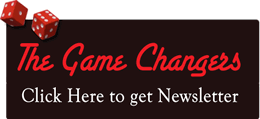
Evolving and Winning in the Healthcare Industry
by Jeffrey Spanbauer
Principal, Healthcare Regional Marketing
Given the economy, there is increasing pressure on sales and marketing budgets. Marketing and sales executives know that questions continue regarding where best to spend my next dollar. This dilemma is especially true in the healthcare industry.
There are many changes to the way companies have traditionally done business in the healthcare industry. Healthcare reform is bringing approximately 32 million previously-uninsured consumers into the process. Government oversight will become even more of a factor, and cost containment will be even more critical. Focus on ROI is not just for the big picture, but for all marketing programs. In addition, the healthcare industry is facing other changing market factors, such as limited access to physicians. These factors lead to more scrutiny of budgets. There is a need for a more in-depth view of the marketing mix, to ensure that the programs that are funded gain the most impact. This evolving market makes us view healthcare in a whole new light.
Regional Marketing
One way to capitalize on these changing market conditions is through “regional marketing”. Regional marketing is defined as a targeted allocation of resources to markets for the greatest return on investment. It is an important part of the marketing mix and can help Brands optimize their spending. Also, there’s a need to address the variability across markets, such as different demographics or managed care situations, making markets even within the same states very different. Years ago a blockbuster Brand could afford to do “one-size-fits-all” marketing. They had lots of representatives and plenty of budget, so if the tactics didn’t work in all markets, that was OK. In today’s environment, Brands have tighter budgets, so tailoring strategies and tactics to drivers of brand performance in various markets leads to increased ROI.
Product Variability and the 6 Ps
Regional marketing is important when a product has variability in results across geographies. At HRM, we have analyzed and worked with Brands in over 30 disease states and we typically see significant product variability in market share and volume per 1,000 people. The variability can range to higher than 400% from the top-performing market to the lowest one. We analyze hundreds of data points to determine the cause for this variability in results. We group these data points and categorize them into 6 main drivers of product variability:
- Population – deals with demographics
- Prescriber – focuses on physicians
- Provider – focuses on entities administering the healthcare, such as managed care, hospitals, and clinics
- Payer – deals with who pays, like the government or employers
- Product – deals with competition
- Place – covers Field Force dynamics and state or local legislation
We examine a multitude of data points under each of these 6 categories. For example, in “Population” we look at disease prevalence, age, income, ethnicity, etc. There tends to be significant variability in many of these factors and that translates into variability in results for the Brand across markets.
3 Disciplines in Regional Marketing
We think of regional marketing in terms of 3 disciplines:
- Regional Strategy – developing a vision for regional marketing, assessing the drivers of Brand performance in that region, and identifying market opportunities
- Regional Plan Development – building off the regional strategies to create an integrated tactical plan
- Regional Deployment – the implementation of tactics, along with measurement and analytics to review results and optimize the plan
Together, these 3 disciplines allow an organization to understand its product’s market variability and respond with data-driven, market-level tactics that drive Brand performance. Similar to your overall brand plan, you develop a regional strategy based on insights of the market and customers, then build your plan for capitalizing on market conditions, and then create tactics and programs for deployment.
Merging Regional Marketing with National Brand Strategies
Product messaging for regional programs needs to be consistent with national strategies. We should always maintain Brand equity and positioning in regional marketing deployment. The regional message focuses on regional dynamics, such as product access or local demographics.
Variability in Managed Care
There is a common perception in healthcare that Brand performance is all about managed care. In today’s environment, it is never that easy. It really depends on the product and category, and we’ve found that it actually depends on all the “6 Ps.” We have seen many instances where Brands have some tier 2 markets that have the same or lower market share than tier 3 markets. This variability is why we need to look at all “6 Ps.”
Regional Marketing – Is it Scalable?
Some people say that regional marketing isn’t scalable and takes too much time to implement. We have seen the power of regional marketing, so we believe you need to make time. We have found that the key is to make regional marketing scalable by grouping markets together based on their market drivers. To create market groupings, we analyze the “6Ps”, understand the Brand strategies, and talk to field-based managers. We identify the market drivers and in what markets they are most prominent. Typically, we find a Brand has 3-5 types of markets, such as markets with a high number of specialists in the area or favorable managed care reimbursement. This grouping of markets with similar market drivers makes creating regional plans more manageable for Brand teams.
Typically we don’t create groups based solely on geography, for example grouping by the West coast or Northeast. In fact, in one analysis, Pittsburgh and Honolulu were grouped together. Although these markets are not geographically close and obviously have many differences, they demonstrated similar market drivers for that Brand. Therefore, if market drivers are the same, such as high generic penetration, we group markets together and deploy similar resources to these markets.
Regional Marketing in Today’s Organizations
Some companies are doing a good job with regional marketing in their field-based organizations, specifically multi-functional regionally-based teams—including marketers. The areas where we see most companies struggle with regional marketing include the following:
- Lack of headquarters analysis that evaluates the regional variability to build strategies
- Focusing only on managed care, and not addressing other factors (“6Ps”) impacting their regions
- Not understanding that markets within the same state may have significantly different performance drivers
- Regulatory, legal, and medical review process that is not accessible nor timely for regional initiatives
Growing Brands with Regional Marketing
An incremental prescription is worth a lot of future revenue and profit to a pharmaceutical company. The opportunity for growing a Brand faster is finding the markets where there are favorable variables for the Brand to grow even more, and deploying the right resources to those markets. Regional marketing is applicable to any part of the Brand’s lifecycle, not just once the Brand is mature and not growing as fast as during the early years. We have worked with Brands at launch and at 12 months prior to loss of patent. The key is to figure out in which markets you have the best opportunity to win and allocate your resources appropriately.
Jeffrey Spanbauer is a founding Principal at Healthcare Regional Marketing in Cincinnati. Healthcare Regional Marketing provides strategic marketing and deployment services exclusively focused on helping pharmaceutical companies grow sales in regional markets. He can be reached at jspanbauer@hrmexperts.com

